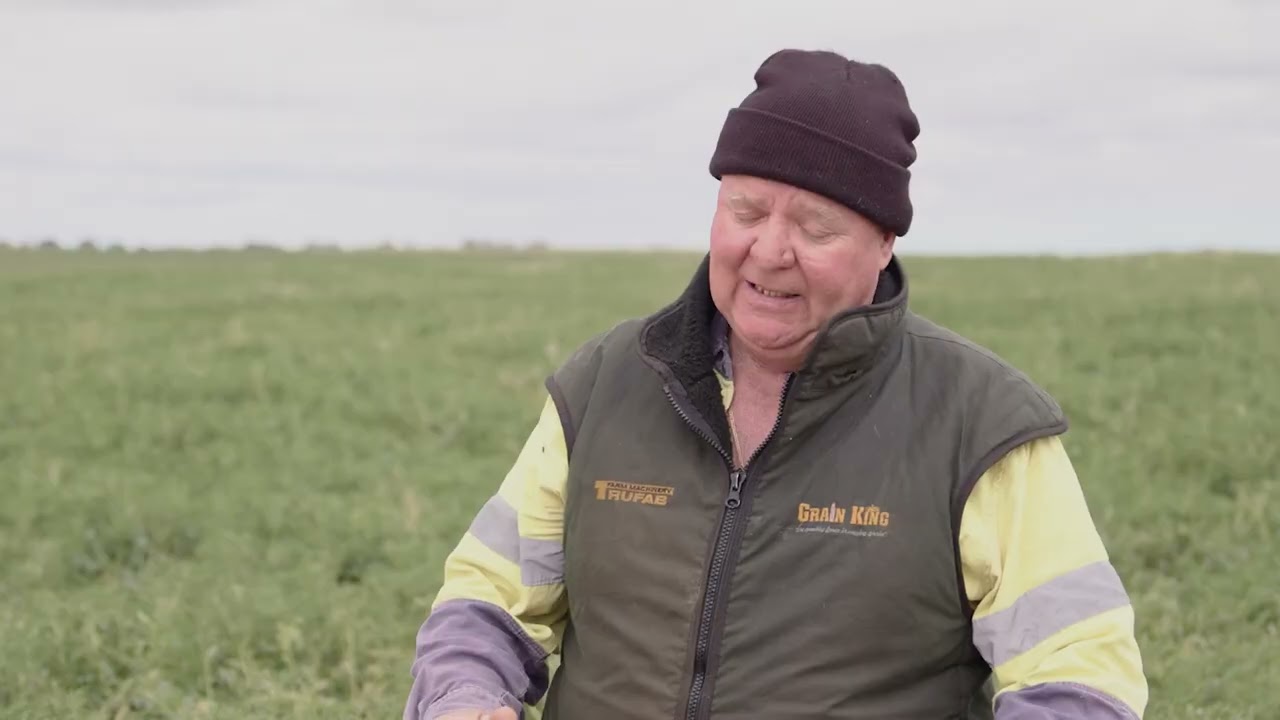John Wallace & Dale Mott Improve Lupin Establishment and Nodulation with SE14®
Farming 6,000 hectares of non-wetting sandplain near Neridup, WA, John Wallace and Dale Mott turned to SE14 to improve germination, spray timing, and legume performance. Since adopting the product, they have seen more even emergence across key crops, cleaner lupins, and improved nodulation. SE14 is now a core part of their seeding strategy for wheat, barley, lupins, and canola.

Key Achievements
-

Improved Germination and Spray Timing Across the Program
More even emergence allowed better herbicide application windows and improved overall crop uniformity.
-

Cleaner, Heavier Lupins with Better Nodulation
Stronger early establishment improved crop competition and supported better nitrogen fixation.
-

Confidence to Dry Seed Non-Wetting Sands at Scale
SE14 gave the team the confidence to sow early, knowing they would achieve reliable germination.
The Challenge
John Wallace and Dale Mott manage a farm with a mix of deep, sandy non-wetting soils ranging from six inches to three feet of sand, with some areas sitting over gravel or clay. Establishing strong plant populations on these soils is difficult, especially during dry starts. While claying can help, it is not a scalable solution for their operation, with only about 100 hectares manageable each year. They needed a practical and effective way to improve germination across a much larger area.
The Solution
Before fully committing, John and Dale trialed SE14 through a SACOA (now Agrion Crop Solutions) supplied trial tank fitted with seven or eight liquid outlets. The portable unit allowed farmers to test in-furrow liquid application using their own bars during seeding, without having to invest in permanent modifications. This gave John and Dale the chance to observe SE14’s in-paddock performance firsthand and validate its fit for their soils and system.
SE14 is now applied using a DBS parallelogram seeder. Granular fertiliser is banded first, followed by 50 L/ha of Flex-N. The seed is placed above, and SE14 is banded just before or after the closing tool. The pass is completed with the press wheel.
On lupins, SE14 is mixed with EasyRhiz inoculant in an 18,000-litre batch tank using a Venturi system. The product mixes easily and has caused no blockages in their system.
The Result
Since adopting SE14, lupin germination has become more consistent. In a previous season, poor establishment after a wind event led to a weedy lupin crop. With SE14 and improved stubble cover, emergence the following year was stronger and cleaner.
“With SE14, the lupins have germinated exceptionally well. I think the lupins are very clean this year.”
— John Wallace
Spray timing has also improved. With more even emergence, they can now apply herbicides at the right time without worrying about varied crop development.
“It’s not staggered, it’s not varied. You’re not worried about some flowering and some not flowering.”
— John Wallace
The team has recorded better nodulation in lupins, which they link to steadier in-furrow moisture and healthier early root growth. That extra nitrogen fixation is viewed as a long-term soil benefit.
They have already ordered SE14 for half of next season’s program and continue to fine-tune liquid placement across all crop types.
“For growers that can see the potential going forward, they need to make that investment and get their bars set up so they can really see the benefits of SE14.”
— Dale Mott
Dale sees the product’s value extending well beyond legumes.
“Going forward, lupins is an absolute no-brainer, but across the board we’re certainly trying all other aspects – canola, wheat and barley.”
— Dale Mott
SE14® is a registered trademark of Agrion Crop Solutions Pty Ltd.

